Accessories called knee pads are orthoses that protect against hypothermia and injury. Such bandages can be easily crocheted or knitted.
But with the help of the second devices, such things are more dense and practical. From the descriptions of the creation of knee pads, it is clear that they can be knitted with stocking needles, using various woolen yarn.
Selection of yarn and knitting needles
The shade of threads for knee pads can be absolutely any. Usually, they choose the one they like best. Single-color yarn is suitable for adults, and for young people, you can choose cheerful colors. The composition of the threads must be wool. Only from them can you get really warm and thick knee pads.
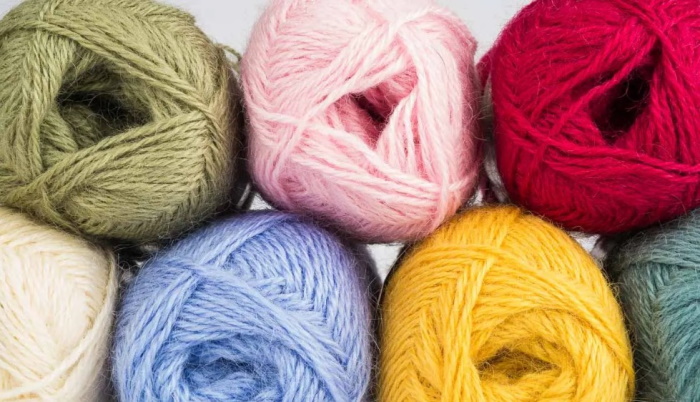
The following table will introduce you to the types of knitting needles and what they are intended for:
| Type of tools (spokes) | What are they suitable for? |
| Auxiliary (curly and short) | Knitting ornaments and details |
| Straight (paired devices with limiters) | Making even canvases |
| Stockings (straight and short, 4-5 pcs.) | Knitting stockings or socks |
| Circular (2 straight devices connected by a flexible cord) | Making a canvas or knitting in a circle |
Knitting knee pads with knitting needles (the description is easy even for beginners) is actually not very difficult. Convenient patterns explain in detail and step by step how to make such wardrobe items. Correctly created bandages will firmly cover the joints of the legs and fit tightly to the knees.
All sets of knitting needles have their own number indicating their size. Too thick devices make the pattern unnoticeable and loose, and thin ones tighten the fabric too much. The number of knitting needles is determined by their thickness. For example, if it is 2nd, this means that the thickness of the devices is 2 mm.
A suitable way to recognize the size of knitting devices is the one that determines such parameters relative to the yarn numbers. If, for example, the thread thickness is 2 mm, then more suitable knitting needles for them will be marked 3. For bulky yarn, knitting devices should differ in thickness from the threads by 2-3 mm.
By length, knitting needles are:
- flexible (45 cm);
- straight (25 or 36 cm);
- circular (with a connection length of 40-90 cm);
- double-edged (18 or 25 cm).
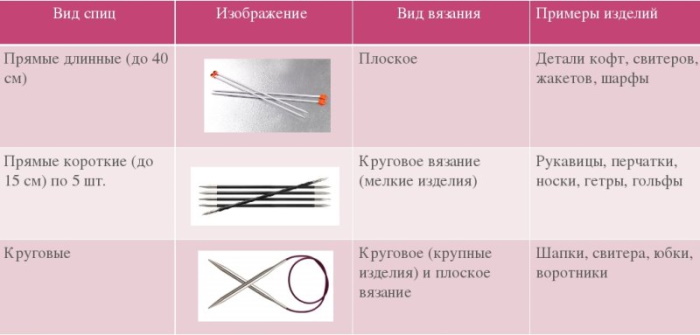
The following needles are considered non-standard:
- circular, 29 cm;
- straight (18 cm);
- double-edged (36 cm).
The length of the cord in circular knitting needles should be 80 cm or more. This will make knee pads easier and faster to knit, especially for beginners. To prevent finished products from rolling when worn, knitting needles for them are chosen 2 numbers thicker than the marking on the threads themselves.
Since beginners usually knit very tightly, they should choose devices for this 0.5-1 size larger than those suitable for a certain yarn. For knitting more voluminous things, choose the longest devices.
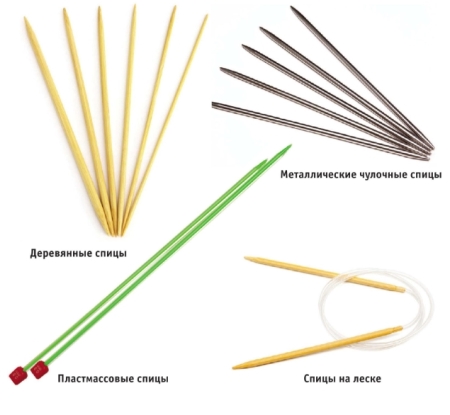
Depending on the material, knitting needles are:
- plastic, which are lightweight and flexible; but they are also very slippery and not suitable for creating large things;
- bamboo or wood; they are lightweight and ideal for silk or viscose; such devices are convenient to use;
- metal ones, which are used to knit woolen products.
Even beginners can knit knee pads with knitting needles (description follows below, in the text). It is better if such products are woolen. This way they are quite warm and healing for joints. After all, natural fibers are considered more environmentally friendly than artificial or acrylic ones.

The following knitting needles are suitable for unusual threads:
- for angora and mohair - 2 mm thicker than the yarn, so the finished items are airy and light;
- for lycra, needles selected using the standard method are suitable;
- For synthetic and long-haired yarn, choose knitting needles number 5 or 6.
Wool knee pads knitted
The pattern for knitting knee pads is divided into the following stages:
- First, the dimensions are calculated. To do this, measure the joint with a measuring tape and write the result on paper.
- The number of loops for circular knitting is calculated based on the knee circumference.
- They start working on the elastic band (1x2) of the product. It is knitted from the bottom.
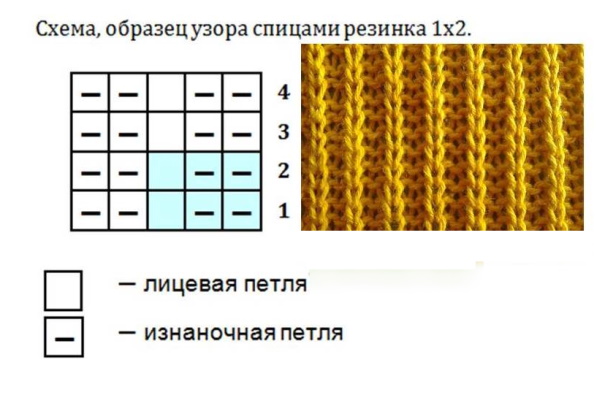
The pattern of this part looks like this:
- 1st row: 1 knit, 2 purl, then repeat the pattern to the end.
- The next circle or row is knitted similarly to the 1st, that is, knit stitches over knit stitches, and purl stitches over purl stitches.
- Knit 10 rows of elastic and switch to the ribbed part of the knee pad.
- To do this, knit 6 elastic loops in the form of a purl stitch. The next 2 rows are made in a similar way. The next couple of circles are knitted in the front stitch, additionally capturing the repeats from the sides of the elastic. In total, after this, you should get 9 stripes with purl loops.
- Continue knitting in the same way as in the previous step, but with decreases rather than increases, until there are 6 loops left on the needles.
- Switch to knitting the elastic band. This is done until it reaches a size of 10-20 cm.
Tips and tricks
To choose the right yarn and knitting needles, you need to knit a sample of 10 loops and 5 rows before you start making knee pads. Then, using this model, analyze the density of the product and calculate the total number of loops.
For patterns with braids and crossed loops, knitting needles 1.5 mm larger than the thread size are suitable. With this approach, the finished fabrics come out much looser, because this knitting method itself is quite dense.
Knitting needles that are 0.5 mm thinner than the yarn are chosen for:
- work with dropped or extended loops;
- knitting with yarn overs;
- openwork patterns.
The elastic band along the bottom of the fabric is knitted with devices that are 1 mm thinner than the knitting needles used to create the main product. Due to this, the ends of the finished fabric do not stretch. For a denser execution and thin knitting needles, they try to take a little more thread than required.
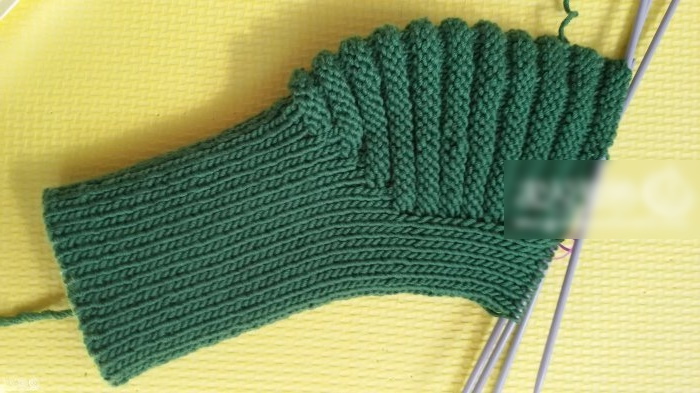
For a tighter fit of the loops when knitting knee pads, it is necessary to select the knitting needles correctly. Their number should correspond to the yarn. It is usually indicated on the skeins of thread.
Dog hair is the best material for creating homemade and medical knee braces. This material perfectly warms sore joints during inflammatory processes in the legs.
Knitting knee pads with knitting needles (descriptions and instructions for making them can always be found in certain resources) is worth it for those who constantly have problems with leg joints. Such warm accessories will warm and heal their owners. These things protect knees from hypermobility and help people continue to move and work as usual.
Yarn Artemis from sheep wool and angora rabbit down, if you knit knee pads from it, will provide dry warmth and accelerate blood circulation. Products from it are very soft and hypoallergenic.
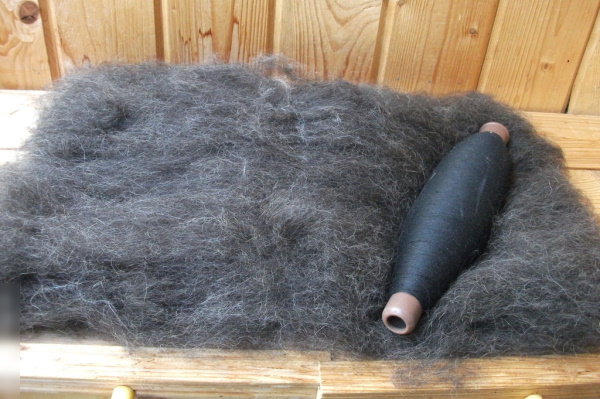 |  |
| Dog hair yarn | Yarn Artemis from sheep wool and angora rabbit down |
Elastane and lycra, which are included in the composition of such knee pads:
- extend the life of knitted accessories;
- provide mobility and comfort to joints;
- prevent the fasteners from shifting and slipping.
The following types of yarn are best suited for creating warm knee pads:
- Troitskaya or Lada (products made from it have high heat-conducting characteristics and a slightly noticeable shine), fabrics from which, with proper care, always remain neat and smooth. These threads have rich colors.
- Semi-wool Alize Lanagold, Turkish production. Products made from it are light and warm. They also do not have the property of losing their appearance and stretching. This is due to the content of synthetics in the threads.
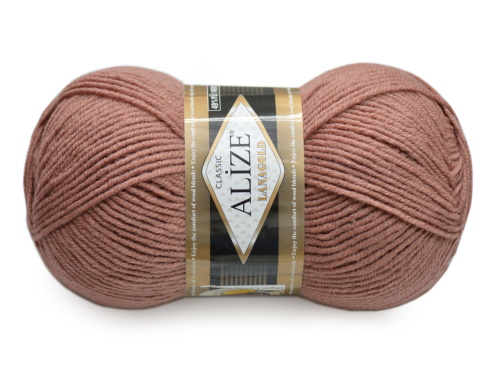 | 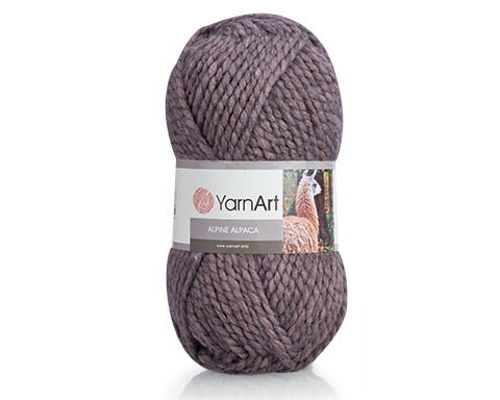 |
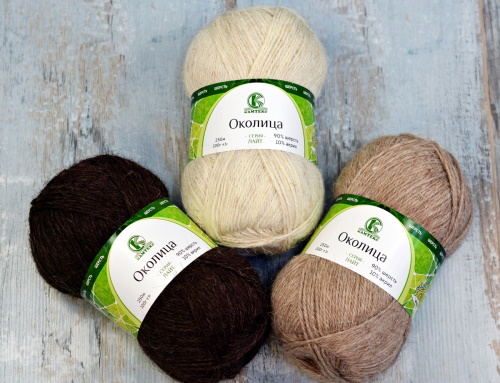 |  |
- Yarnart Alpina Alpaca, it produces very warm and damage-resistant items.
- Pekhorka rainbow style (two-thread), these threads are slightly fluffy, and the patterns from them are laid out in stripes.
- Camel's pekhorka, things made from it are: medicinal; hygroscopic; heat-insulating.
- Laika Color City (Merino and dog wool), it retains heat and protects against: radiculitis; osteochondrosis; rheumatism.
- Kamtex is a sheep wool border with medium thread thickness.
For additional thickening of knee pads when knitting them, you can use double elastic, at the beginning and end of the work. When creating it, in the 1st row, alternate front and back loops. Then the first ones are knitted, and the second ones are simply removed with another knitting needle.
After this, the front ones are left unchanged, but the back ones are worked as expected. The finished elastic resembles a front surface folded in half.
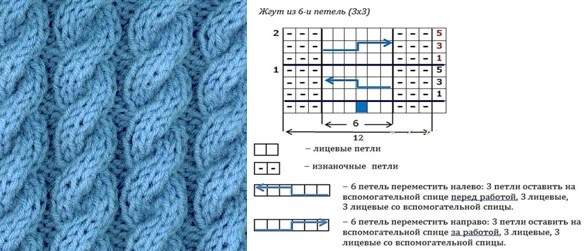
The elastic band for knee pads can even be braided. It is used to make both a simple edging and the entire product. The elastic is made in a standard way until the oblique reaches a certain height.
Where this element begins to curl, the knitted face loops begin to change places one by one. Then they act in the standard way, until the next twist.
There is another variant of the elastic band, which is called "drunk". It consists of a rapport with 6 + 2 loops. The first row begins with 4 purl and 2 front. Then the pattern is repeated to the end of the circle, finishing it with 4 purl. The second row is done according to the pattern. The third circle begins with 3 purl.
The next loop is removed to an auxiliary knitting needle behind the product. Then 1 purl is made, then the previously removed loop is knitted. The next front loop is left in front of the fabric on an auxiliary device.
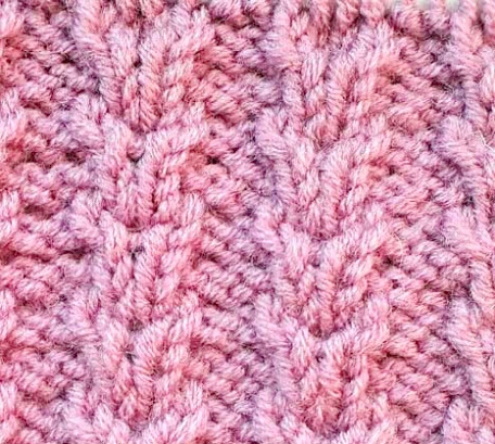
Next comes 1 front, then purl from an additional knitting needle. And so repeat until the end of the circle, finishing all 3 purl loops. The 4th row is done according to the pattern. After this, everything is repeated from the very beginning.
It is necessary to knit knee pads with knitting needles (the description of this process may contain several options for creating such accessories) at least simply to avoid freezing in severe cold.
Such products are created either as a single piece of fabric, which is then sewn together, or according to the sock principle. In the second option, homemade wool orthoses are knitted on 5 knitting needles.
The best knee pads are considered to be woolen or semi-wool:
- Before you start knitting them, you decide on the density of the fabric. For this purpose, knit a 10x10 cm square with knitting needles. Then count the number of resulting rows and loops. After that, measure the leg, stepping back about 15 cm up from the knee.

- Next, calculate the number of loops that will be needed to knit a knee pad with the optimal width. Then determine the final length of the product. Then calculate the number of rows. For a smooth and well-fitting product, it is recommended to make it according to the size of the knee or to the middle of the calf.
- Knee pads can be knitted in the form of a sock elastic. To create them, use 5 thin knitting needles. The optimal number of loops is divided into 4 and placed on all knitting needles, leaving 1 empty for work. After this, the knee pads are knitted in a circle with front and back loops.
The elastic bands can be left only at the ends of the created accessories. Between them, a smooth space is created using face loops, without using back loops at all.
- Another method of creating a knee pad is knitting a quadrilateral and its sides. The finished product is then simply sewn along the edges. That is, before this, it is knitted with knitting needles in the form of an elastic band or stocking stitch to the required length.
For knitting men's knee pads, a more prickly yarn is often used, for example, semi-coarse pekhorka from 100% sheep wool. When creating such products, resort to the help of 1.5 skeins of 2-thread yarn and stocking needles number 3.5.
Knee pads are made in a circular manner, from top to bottom, using a gradual decrease in loops. The bulges at the knees are created in shortened rows so that the finished products do not stretch later.
In this case, a pattern called Rice is also used, and the places under the meniscus are knitted with a front surface. If desired, elastic bands are pulled in between the loops of the edges.
The loops in the knee pads are reduced as follows:
- On the outer 3 rows of the elastic band located at the top, in the purl flights, knit 2 loops together (on the 1st and 4th needles).
- On the 13th circle, the previous actions are repeated 2 times.
- In row 14 – 1 time.
- In row 15 – 2 times.
- After moving to the main part, the decrease (in the form of 2 knit stitches together) is made at the beginning of 1 knitting needle.
- Next, in the middle of the work, decrease 2 loops on needles 1 and 4 again.
- All decreases should be on the back of the knee pad. The lower cuff of the product is made simply straight.
Knee pads, especially if they are made of wool, are very useful and healthy things. To knit them, you will need a couple of skeins of natural yarn and knitting needles.
Such things are irreplaceable for an active lifestyle, and are also necessary for keeping your feet warm at home and outdoors. You can learn how to knit such accessories yourself from the descriptions of their creation.
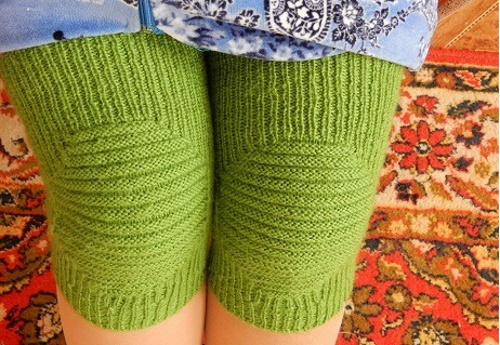
To create warmer and more comfortable knee pads, with an accordion in the middle, you will need:
- markers;
- knitting needles;
- 100 g x 300 m of sheep-dog wool yarn.
Instructions:
- First, knit the top in the form of a 1x1 elastic band from 10 circular rows.
- They move on to making the ribbed part of 12 loops. To do this, they place a marker and knit them as front loops.
- The work is again marked with a limiter, it is turned around and 12 purl stitches are performed.
- The side of the fabric is changed again and the previous number of loops are knitted. Then knitting continues in a circle.

- In the lower elastic band, on 2 sides of the limiters, the loops are reduced by one in each row. At the same time, the total number of loops remains the same.
- Place a marker, knit 14 purl stitches, and place a stopper again.
- After turning, make 14 front loops and again move the product to the other side.
- Next, do 14 purl stitches and continue knitting in a circle.
- Place a marker and knit 16 stitches.
- Then comes the limiter and 16 purl.
- After turning the fabric, knit 16 front loops.
- Then continue until the end of the circle, using the loops from the 1x1 elastic band.
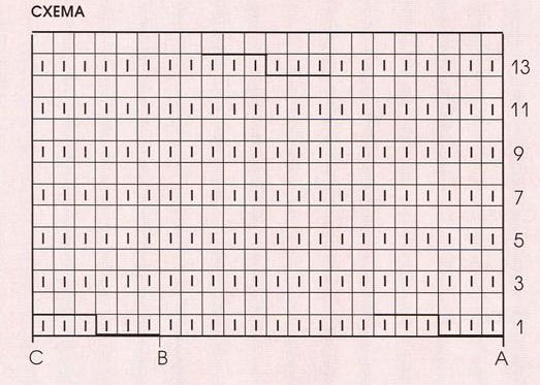
- When there are 34 loops in the accordion, the product is knitted 4 cm further without changes. Then the ribbed part is gradually reduced: marker; 34 front loops; marker; turn; 34 back loops; turn; 34 front loops; 1x1 elastic band to the end of the circle; marker; 32 back loops; marker; turn; 32 front loops; turn; 32 back loops; 1x1 elastic band to the end of the row; marker; 30 front loops; marker; turn; 30 back loops; turn; 30 front loops; elastic band to the end; then continue in the same way until 12 loops remain in the ribbed part.
After all this, they move on to knitting a 1x1 elastic band and do it until it reaches 3 cm in length. After the loop, they begin to decrease so that the knee pads do not slip off the leg later. To do this, they knit 7 loops with an elastic band, and then knit the next 3 together. Then they knit another 4 cm of elastic and close the loops.
All types of knee pads, both knitted and factory-made, securely fix the joints. Homemade woolen leg bandages heal inflammatory processes, such as arthrosis or arthritis. You can knit such accessories for the knees with knitting needles, using special descriptions and patterns.
Video about knitting
How to knit knee pads with knitting needles:
